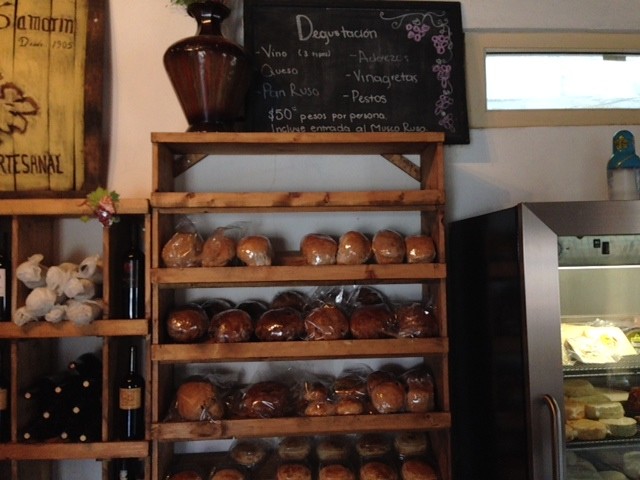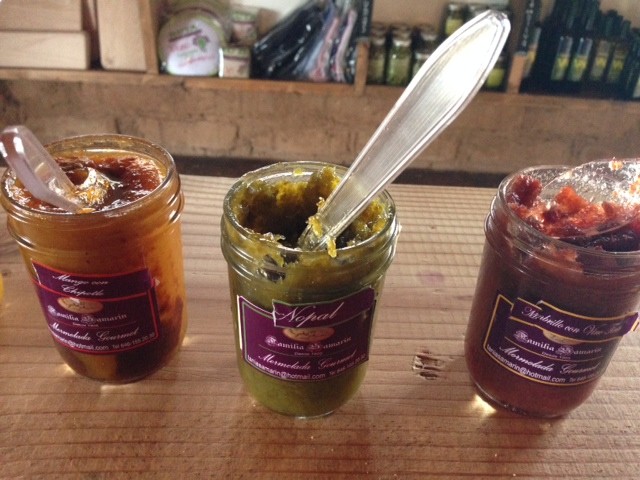
Though wine grapes have been grown in the Valle de Guadalupe since the days of mission planting, by the late 19th century the wine industry had all but died off as the Republic of Mexico seized land held by the Roman Catholic Church. Faced with a new bureaucracy and administrators located weeks away in the Valley of Mexico, the wineries and the grapes withered and died.
]
It was the arrival of religious asylum-seekers from what is now Russia and Kazakhstan that spurred the redevelopment of Baja California's wine industry. The Molokans, a pacifist group of ethnic Tatars who had been converted to a spiritual form of Christianity, were being obliged to convert once again, this time to the Russian Orthodoxy of the ruling class. Refusing to submit either to Russian Orthodoxy, the officially recognized forms of Protestantism, or to Roman Catholicism, they fled at the turn of the twentieth century; first to the United States, then to the Valle de Guadalupe. The Molokans purchased 40 hectares (slightly less than 100 acres) of land, built homes and a church, and planted grapes, hoping to capitalize on a growing thirst for wine that was being met only by the Santo Tomás winery.
While the Molokans have dwindled in number in the face of marauding settlers from elsewhere, even fleeing back to the United States in leaner times, the structures remain, and the ejido of El Porvenir remains a Russian-Mexican place.
There are museums and tours of the old buildings in El Porvenir, the largest of which is run by the Samarin family, along the southeast side of the road (the right, as you head toward Francisco Zarco and Highway 3). The dusty old house, built for people significantly shorter, still contains the family memorabilia, including papers giving them the right to settle, place settings, the traditional dress, and even the old sauna. Entrance costs 20 pesos ($1.50), but 50 pesos ($3.75) gets you entrance to the museum and a tasting of bread, wine, cheese, and jam.
As with many cultures, the last thing to be assimilated is the food. Amongst the signs for wineries with Russian last names, there are at least a dozen bakeries along the road advertising pan artesanal. The local specialty, called pan molocano, is a dark, rye-laden, sour, spongy loaf that would be called chyorny khleb (“black bread”) in Russian. It is excellent bread, far superior to the mushy white pan Bimbo so beloved of Mexican schoolchildren.

While the Samarins' bread was quite good, it was the spreads that set them apart. Lined up in a row on a rustic wooden table in the center of the room are a dozen and a half jars of preserves; everything from apricot with chile to chocolate spreads. A jar of their mermelada de nopal–an herbal, bright green jam made not from the prickly pear fruit, but from its paddles–costs 50 pesos and is an outstanding accompaniment to many of the great cheeses produced in the region.
There is a restaurant next door which, in addition to the usual menu of Valle de Guadalupe food, offers piroshki and blintzes, food that hearkens back to the old days when Russian rather than Spanish was the language of El Porvenir.
The Museo Ruso is located in Ejido El Porvenir, 20 km from the turnoff from Highway 1 and 7 km from the turnoff from Highway 3.
Follow Stick a Fork In It on Twitter @ocweeklyfood or on Facebook! And don't forget to download our free Best Of App here!


One Reply to “Pan Molocano and the Russian Pacifists of the Guadalupe Valley”